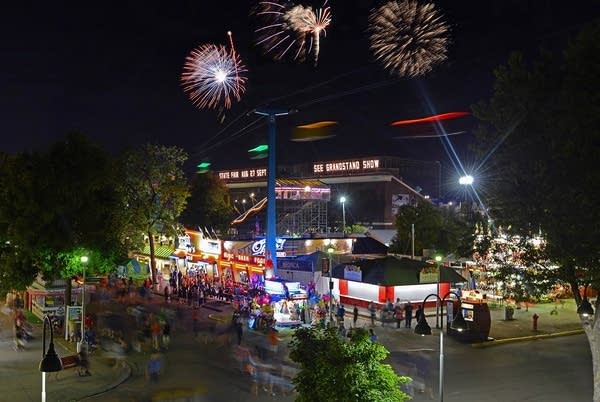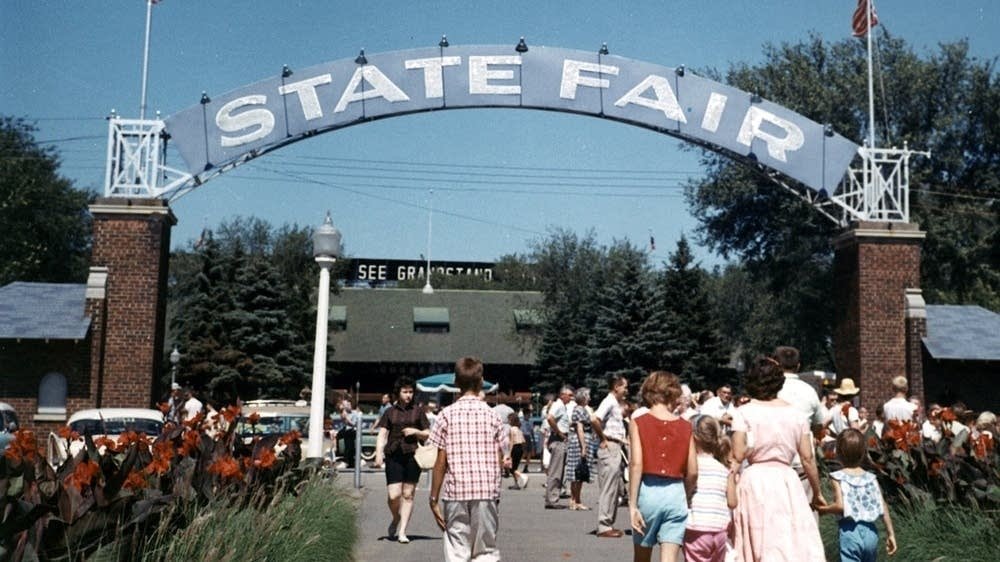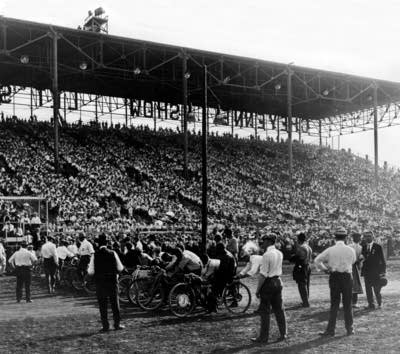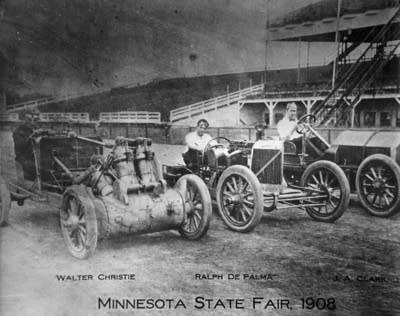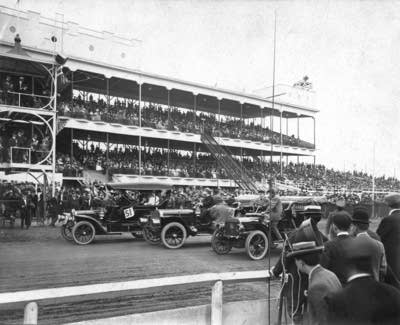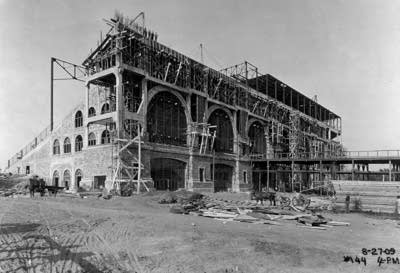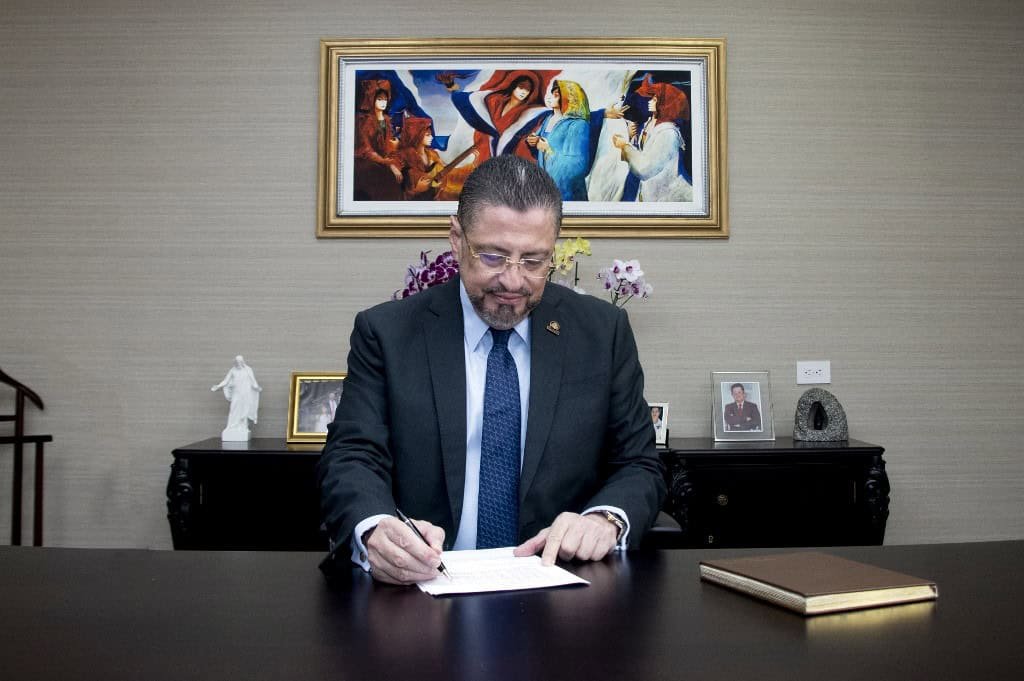Near the end of each night during the Minnesota State Fair, musical artists like Meghan Trainer, Ja Rule and Nelly will take the stage at the fairground’s Grandstand.
The groovy music and memorable performances expect to draw a large crowd to the fair, but not everyone will stop to think about the rich history of the venue.
For 140 years, the Grandstand has held a variety of entertainment acts, speeches and sparks of cultural change. But how did this towering piece of the past become a fixture of Minnesota summers?
Long before head-bobbing hip-hop concerts and adrenaline-filled auto races, fans at the grandstand fancied true horsepower.
“Horse races were a really big thing for entertainment. People came for agriculture, but they stayed for the amusement,” said Keri Huber, the archivist for the Minnesota State Fair.

Fairgoers could see famous horses, like record-setting Dan Patch, whose legacy lives on in a street and a stage named after him at the State Fair.
To catch the most anticipated horse races, fairgoers had to make plans much earlier than they do now because the Grandstand had no lights. At sunset, workers closed the fairgrounds until the next morning.
The addition of lights in 1899 also started the tradition of the nightly show followed by fireworks.
At about the same time, fair officials introduced audiences to different types of performances.
While horse races were still the main attraction most days, other parts of the show featured various acts, like daredevil cyclist A.M. Schreyer and a tightrope-walking “elephant” (actually two people in a costume).

“Back in the day, the grandstand shows were these big vaudeville-type productions: ‘The Last Days of Pompeii,’ fireworks erupting like Mount Vesuvius. It was a spectacle,” Huber said.
During the early rise in exotic acts at the Grandstand, fair officials were always thinking of what they could bring to the fair to draw the next biggest crowd.
In 1907, men in stiff suits and bowler hats witnessed the fair’s first automobile race. As children ran around the bleachers, long-skirted women fanned themselves. Below the crowd, there were open spaces between the tracks, known as pits, where grease-streaked mechanics huddled and argued over mechanical issues.
You might see front wheel drive pioneer J. Walter Christie, prolific race car driver Ralph DePalma and J.A. Clark, the first to race on the grandstand’s track. As the cars barreled around the dirt course, the crowd cheered, booed and leaned over the balcony railing at the finish.
In 1908, the Italian driver DePalma set a world record for finishing a mile in just 51 seconds.
As the crowds grew — including new visitors from around the country — and the performances became grander, the venue was failing to keep up. Fair officials brought rotten wood from the structure to state lawmakers “to show how badly it needed repairs,” Huber said.
Hundreds of masons, plasterers, joiners and carpenters rushed to finish the new grandstand as soon as possible.
Once complete in 1909, fair officials scheduled the historical reenactment, “Minnesota at Gettysburg.” That was followed by the first airplane flight, motorcycle races and the “Phantom Car,” radio-controlled from an airplane flown by “Miss Muriel Rudell, Aviatrix,” as the advertisement declared.
The new grandstand attracted presidents Calvin Coolidge, William Howard Taft and Theodore Roosevelt, who spoke to crowds as large as 60,000 people, spilling out and into the surrounding area.
As vice president, Roosevelt had previously spoken at the fair in 1901, famously saying “speak softly and carry a big stick” to the Grandstand audience.
After World War II and the polio epidemic caused the fair to cancel, the Grandstand’s auto and horse races, thrill acts, a band tournament and fireworks show helped bring a record 324,274 State Fair attendees in 1947. There were new performers, including an orchestra, dancers, tumblers and a comedic opera.
Beginning in 1974, the Grandstand started to feature a different performer each night.
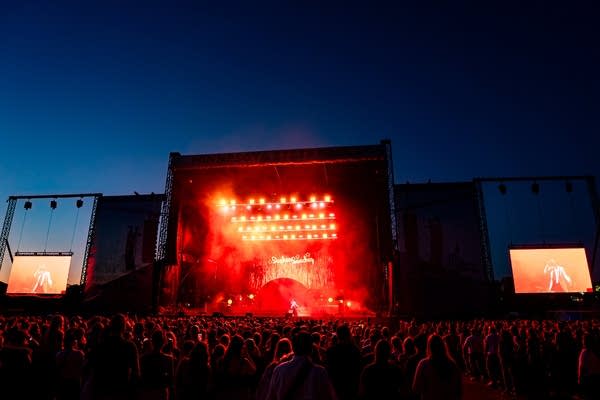
Musical stars like B.B. King performed at least four times at the Grandstand, enjoying it so much that he brought in Al Green and Etta James.
In 2002, the State Fair decided to fully lean into its musical and stage entertainment identity, hosting its final auto races that year.
“It’s kind of a ritual. You leave the concert, it cools down at night, you grab your last bucket of Sweet Martha’s cookies … it’s pretty special,” said Huber.
The Grandstand remains more than just a venue for the Minnesota State Fair, but also an archive of Minnesota’s cultural history.
